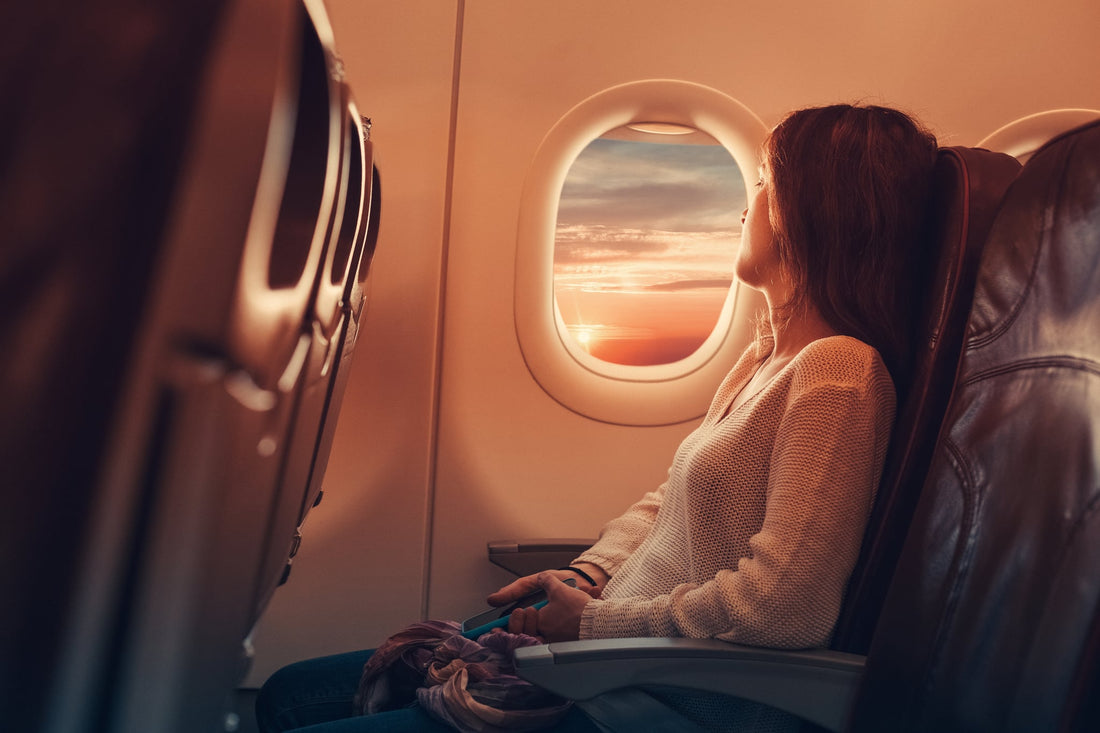Long flights cramped in economy class with no remove to move is common.
How often have you travelled this way only to discover your ankles swollen to twice their size when landing at your destination?
It is not a great way to start a holiday or return home.
Hobbling to collect your baggage and leaving the airport in pain.
While traveling the world to discover new cultures is exciting, the downside is sitting on planes for long hours. The low pressure affects your legs while flying thousands of feet in the air and increases the chance of landing with swollen legs and ankles. Being unable to move around takes a toll on your circulatory system. It also risks developing blood clots or deep vein thrombosis (DVT).
One way to reduce the risk of DVT is wear flight compression socks while traveling.
Signs of deep vein thrombosis
DVT can be difficult to diagnose as there are not always visible symptoms to alert you that something is wrong. This is mainly because it has an impact on the veins deep in your legs, not the ones close to the surface.
It is not until people notice persistent pain in their legs do they think something may be wrong. But some people notice their legs are red in colour and more painful when walking or standing.
Others notice their legs and feet feel warm.
Other DVT risk factors include people with blood circulation problems, cancer, pregnancy, smoking, chronic conditions, ageing and obesity. So compression socks give you added peace of mind while in the air by reducing the risk of DVT.
What are compression socks?
While the risk of DVT on long haul flights is low, compression socks reduces the risk even further. They work using gentle pressure to increase the blood flow in the veins buried deeply in your legs. This helps your leg muscles and veins move blood more efficiently to your heart.
Compression socks prevent blood pooling in your lower extremities so they reduce the risk of DVT. They also reduce swelling and pain so when you land you are not crippled with pain.
Compression socks are an inexpensive preventive method that protects you during long periods of inactivity.
How to wear compression socks correctly?
Avoid putting on your compression socks at the airport just before boarding your flight. Put them on much earlier. Speaking to Herald Travel, Dr Marc Shaw of Worldwise Travel Clinics in New Zealand said people should put them on first thing in the morning before your legs have a chance to swell. By doing this your legs have a chance to adapt.
He also said travellers should not rush to take them off when they land. Leave them on for several hours to assist in reducing the swelling. This is again to allow for the body to adapt after landing.
Putting them on
When you first use compression socks it can be a little tricky to them on because they are tight. The easiest way is to turn them inside out over the toe area. Put the sock over your toes and roll the sock over your foot and up your leg.
When compression socks feel too tight or are painful to wear, the size is probably wrong. It is important to get the size correct. Your legs should feel gentle, persistent pressure when you have the right size. They should never cause pain or feel like your legs are being strangled.
Preventing deep vein thrombosis
While wearing compression socks is effective for preventing your legs from swelling, it also helps to move around the cabin for a few minutes every hour or two. It can even be worth asking for an aisle seat if you are in a DVT high risk category. By sitting on the aisle, it gives you easy access to move around without disturbing the passenger next to you.
Also drink water to stay hydrated and flex your ankles every 30 minutes while flying. All these things combined with wearing compression socks will help prevent your legs swelling and reduce the likelihood of DVT developing.
Make a fashion statement
Compression socks come in all sorts of colours and patterns. So wear them to make a fashion statement to reflect your individuality. They can brighten or complement any travel outfit while being functional.
Compression socks work when flying
When flying do not forget your compression socks especially if you are at risk of developing DVT. They apply gentle pressure to your legs and feet to reduce swelling. But make sure they fit correctly. Put them on when you get up and take them off several hours after landing to allow your body to adapt.
Make compression socks an essential part of your travel kit.
 Active Compression
Active Compression
 Plain Compression Socks
Plain Compression Socks

